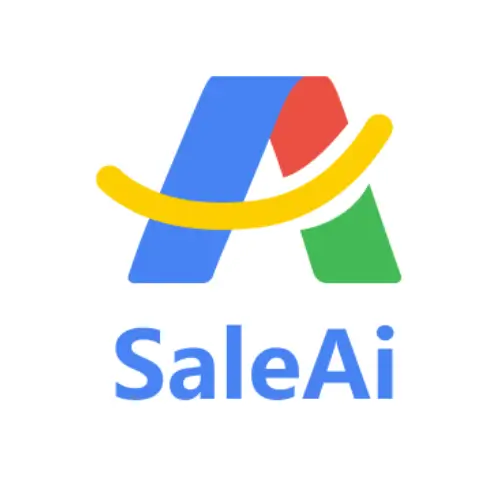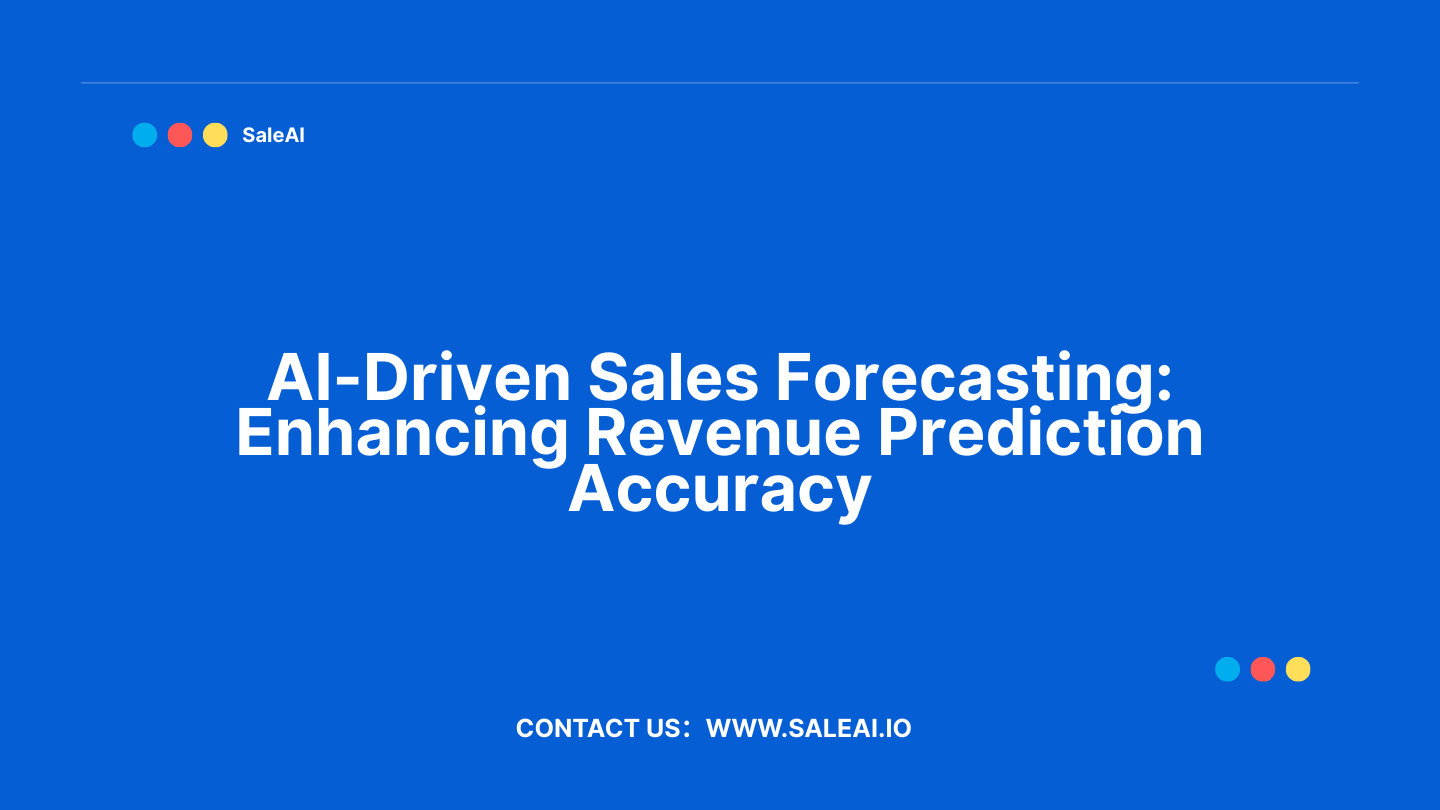Introduction:
Sales forecasting is a fundamental aspect of business success. Accurate predictions help organizations allocate resources effectively, plan strategies, and achieve revenue targets. However, traditional forecasting methods often rely heavily on intuition or outdated data, leading to inaccurate estimates and missed opportunities.
Today, AI-driven sales forecasting is transforming how businesses predict and plan their revenue streams. By leveraging artificial intelligence and machine learning, tools like SaleAI enable businesses to analyze large volumes of data, uncover patterns, and provide precise forecasts that drive smarter decision-making.
In this article, we delve into the mechanics of AI-driven sales forecasting, its advantages, and why it’s becoming a must-have for businesses aiming to scale efficiently.
What is AI-Driven Sales Forecasting?
AI-driven sales forecasting uses artificial intelligence and machine learning algorithms to predict future sales outcomes based on historical data, market trends, and current performance metrics. Unlike traditional methods, AI-powered forecasting dynamically adapts to real-time changes in data, delivering highly accurate and actionable insights.
Key components of AI-driven sales forecasting include:
- Data Integration: Combining data from multiple sources such as CRM systems, marketing platforms, and external market trends.
- Pattern Recognition: Identifying trends, seasonality, and anomalies in historical sales data.
- Predictive Analytics: Forecasting future sales performance based on current pipeline activity and external factors.
- Scenario Modeling: Simulating different sales scenarios to prepare for various market conditions.
How AI-Driven Sales Forecasting Works
a. Data Collection and Integration
AI tools aggregate data from multiple internal and external sources, including:
- CRM platforms (e.g., Salesforce, HubSpot).
- Marketing analytics tools (e.g., Google Analytics, email campaign tools).
- Historical sales data and transaction records.
- External factors like industry trends, economic indicators, or competitor performance.
b. Pattern Analysis and Machine Learning
AI algorithms analyze historical data to identify patterns, such as:
- Seasonal sales trends.
- Factors influencing deal closures.
- Common drop-off points in the sales funnel.
Machine learning models continuously learn and refine their predictions as new data is added, ensuring forecasts are up-to-date and accurate.
c. Predictive Modeling and Forecasting
AI-driven forecasting tools create predictive models that estimate:
- Monthly and quarterly revenue projections.
- Likelihood of closing specific deals in the pipeline.
- Potential growth opportunities in different market segments or territories.
d. Actionable Insights and Recommendations
Beyond forecasting revenue, AI tools provide actionable insights to optimize sales strategies, such as:
- Highlighting underperforming regions or sales reps.
- Recommending resource allocation to high-performing segments.
- Identifying at-risk deals and suggesting next steps to close them.
Benefits of AI-Driven Sales Forecasting
a. Enhanced Accuracy
AI eliminates human bias and guesswork by analyzing data with precision. This results in forecasts that are significantly more accurate than traditional methods, reducing the risk of over- or underestimating revenue.
b. Real-Time Updates
Unlike static forecasts, AI-driven tools update predictions in real time as new data becomes available. This allows businesses to adapt quickly to changes in market conditions or customer behavior.
c. Resource Optimization
Accurate forecasts enable businesses to allocate resources more effectively, ensuring:
- Sales teams focus on high-priority opportunities.
- Marketing budgets are directed toward high-performing campaigns.
- Inventory levels match projected demand, reducing costs.
d. Improved Decision-Making
With AI-generated insights, leadership teams can make data-driven decisions about:
- Expanding into new markets.
- Adjusting sales targets based on realistic projections.
- Refining sales and marketing strategies to maximize ROI.
e. Competitive Advantage
Businesses using AI-driven forecasting gain a strategic edge by anticipating market trends and customer needs faster than competitors.
How SaleAI Delivers AI-Driven Sales Forecasting
SaleAI’s platform is designed to revolutionize sales forecasting with advanced AI capabilities. Here’s how SaleAI stands out:
a. Comprehensive Data Integration
SaleAI seamlessly integrates with your CRM, marketing platforms, and external data sources, providing a unified view of your sales pipeline and historical performance.
b. Predictive Analytics at Scale
SaleAI’s machine learning algorithms analyze millions of data points to deliver:
- Highly accurate revenue projections.
- Deal closure probabilities for individual opportunities.
- Early identification of pipeline bottlenecks.
c. Scenario Planning and Simulation
SaleAI’s tools allow businesses to model different sales scenarios, helping teams prepare for:
- Seasonal fluctuations in demand.
- Changes in market conditions or customer behavior.
- Budget adjustments and resource reallocation.
d. Real-Time Insights Dashboard
SaleAI provides an intuitive dashboard that displays key forecasting metrics, such as:
- Expected revenue by month, quarter, or year.
- Pipeline health and deal progress.
- Regional or product-level performance trends.
e. Customizable Alerts and Recommendations
SaleAI sends proactive alerts and recommendations, such as:
- Flagging deals at risk of slipping.
- Suggesting actions to accelerate deal closures.
- Highlighting untapped growth opportunities.
Use Cases for AI-Driven Sales Forecasting
a. Enterprise Resource Planning
A manufacturing company used SaleAI’s forecasting tools to:
- Predict demand for key products across different regions.
- Optimize inventory levels, reducing storage costs by 20%.
- Align production schedules with projected sales, improving operational efficiency.
b. Scaling Startups
A SaaS startup integrated SaleAI to:
- Set realistic sales targets based on historical pipeline data.
- Identify high-performing customer segments for targeted marketing.
- Achieve a 30% increase in forecast accuracy, enabling better investor reporting.
c. Regional Sales Strategies
A global logistics firm leveraged SaleAI’s insights to:
- Compare performance across different regions.
- Reallocate sales reps to high-opportunity territories.
- Increase regional revenue by 15% in one quarter.
Steps to Implement AI-Driven Sales Forecasting
- Audit Your Current Data: Ensure your CRM and sales records are accurate and complete before integrating AI tools.
- Integrate Data Sources: Connect all relevant platforms, including CRM, marketing tools, and financial systems, to provide comprehensive data for analysis.
- Choose an AI Solution: Select a platform like SaleAI that offers advanced forecasting features tailored to your business needs.
- Train Your Team: Educate sales and operations teams on how to interpret and act on AI-generated forecasts.
- Monitor and Optimize: Continuously track forecasting accuracy and adjust inputs or strategies as needed.
The Future of AI-Driven Sales Forecasting
As AI technology continues to advance, sales forecasting tools will become even more sophisticated, offering:
- Deeper Market Insights: Advanced algorithms that analyze external market trends and competitor data.
- Hyper-Personalized Recommendations: Customized insights for individual sales reps based on their specific pipeline.
- Integration with IoT and Big Data: Leveraging data from connected devices to refine demand predictions.
By adopting AI-driven sales forecasting today, businesses can stay ahead of the curve and position themselves for sustained growth in an increasingly complex marketplace.






